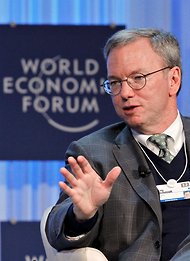For AMC, the network that broadcasts “Breaking Bad,” it will be a very profitable one. Cliffhangers may have been around for more than a thousand years — since at least the composition of “One Thousand and One Nights” — but no one has monetized them as brilliantly as cable networks. In order to get paid, Charles Dickens had to sell the next chapter of his serialized novels; in order to sell advertising, ABC had to order more episodes of its hit show “Lost.” But for the next several months, AMC is converting our eagerness into millions of dollars without showing a single new episode.
Cable TV has developed one of the most clever business models in our modern economy. Until recently, AMC was a basic-cable backwater known for “Threes Stooges” marathons. But a few years ago, it tweaked its business and began offering two or three hours of original programming on a few dozen nights a year. Starting with “Mad Men” in 2007, the network landed hit shows that developed small but obsessive followings. Soon after, it began making larger financial demands of the cable and satellite providers, like Comcast and DirectTV, that carry the network. AMC now charges these providers about 40 cents a month for each subscriber, including the millions who will never watch “Mad Men” or “Breaking Bad.” These providers can refuse to pay up, but doing so would infuriate legions of vocal viewers. (Last summer, the Dish Network played chicken with AMC and lost.) AMC collects $30 million a month in fees alone on a base of 80 million subscribers, which is pretty good considering that the last episode of “Breaking Bad” had fewer than three million viewers.
This business model, perhaps as much as artistic creativity, is responsible for TV’s current golden age. Networks have effectively entered into a quality war. Basic-cable channels have to broadcast shows that are so good that audiences will go nuts when denied them. Pay-TV channels, which kick-started this economic model, are compelled to make shows that are even better. And somehow, they all seem to be making insane amounts of money. This year, NBC Universal’s cable operations are expected to bring in around $5 billion, half of which is profit. Viacom’s revenue will be more than $8 billion, with 49 percent profit. Apple had one of its best years ever in 2012, but its profit margin is expected to be only 37 percent, which is still well above its 23 percent average over the past five years. An auto company would be thrilled with something in the high single digits.
At first, the cable industry’s ascendance into arguably America’s single-most-profitable big business makes almost no economic sense. Not long ago, three major networks controlled all of our viewing. Now dozens of channels reach a fraction of that audience. According to the basic rule of supply and demand, the revenue and profits should plummet. But those rules break down when an industry operates as a near monopoly.
In 1992, Congress made it illegal for municipalities to grant a monopoly to local cable providers. But it was already too late. Most companies thinking of beginning a new cable system balked after realizing the significant barriers to entry — the cost of digging up roads and sidewalks and hiring a fleet of technicians to draw wire to new customers’ homes. Worse, a new cable competitor would have to entice customers by entering a price war, erasing any potential profit. Verizon and ATT actually tried this but found that fiber-optic cable was profitable only in the most dense, urban areas. Satellite offers some competition, especially in rural settings, but many people decline a service that fails whenever it’s too cloudy outside.
Article source: http://www.nytimes.com/2012/12/09/magazine/the-mad-men-economic-miracle.html?partner=rss&emc=rss
